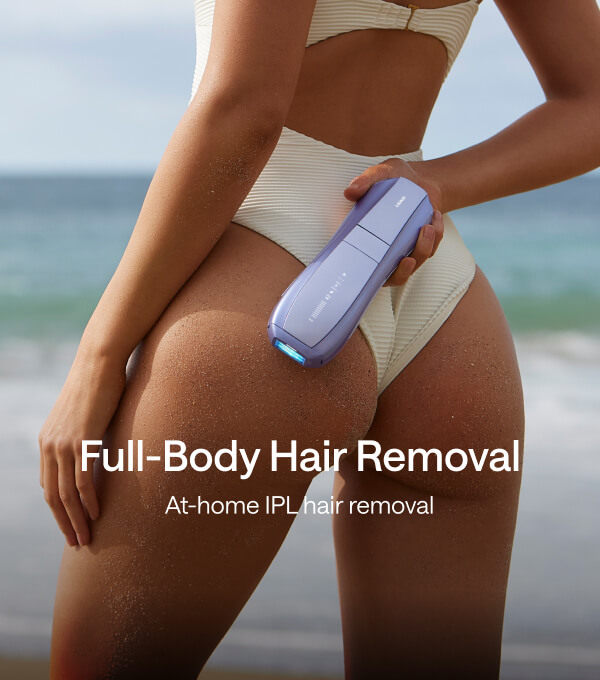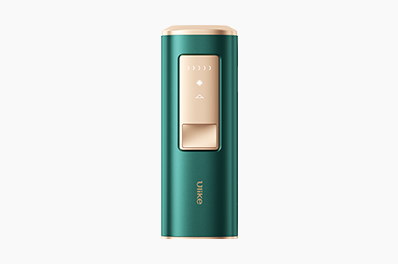FAST FACTS
- Sunscreens are an essential step in any
skincare routine
.
· UV light is the skin’s worst enemy, causing numerous harmful effects, from photoaging and hyperpigmentation to the development of skin cancer.
· It’s advised to protect your skin every day with a broad-spectrum sunscreen with SPF 30 or higher.
If you feel that choosing the right sunscreen for your skin is a tough task, in this article we will give you the tools to – once and for all – find the sunscreen(s) that might fit all your needs.
Why is it so important to apply sunscreen?
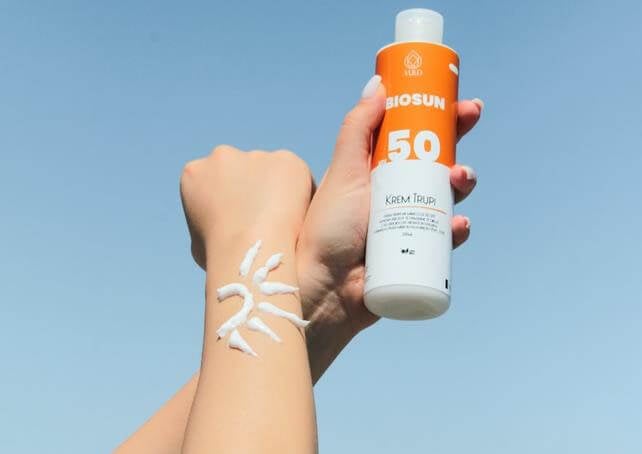
Ultraviolet (UV) radiation has been proven to be responsible for several skin damages [1]:
- Sunburns.
· Skin photoaging, which involves the formation of free radicals and degradation of important skin components (such as collagen fibers).
- Development or worsening of
hyperpigmentation
.
· Skin cancer development (UV light has been classified as a complete carcinogen).
The sunlight that interacts with our skin consists of 2 types of UV radiation:
UVA = Aging
It represents 90-95% of the sunlight and can penetrate deeper into the skin (until the dermis, where collagen and elastic fibers are located) [2]. It’s mainly responsible for the photoaging process.
UVB = Burning
Although it only represents 5-10% of the sunlight and reaches the superficial layer of the skin (epidermis) [2], it’s more energetic than UVA and the main responsible for sunburn and skin cancers. UVB radiation can be directly absorbed by the skin cells’ DNA causing its modification and potential mutagenesis [1].
The use of sunscreens is extremely important to help reduce the deleterious effects of UV radiation on our skin. They act by absorbing, reflecting, or scattering the UV radiation (both UVB and UVA) thanks to the presence of photoprotective agents including mineral and chemical filters [1].
Broad-spectrum: What are SPF and PA?

Nowadays, ideal sunscreens should block both UVB and UVA. Sunscreens with a broad spectrum will cover both UVA and UVB and generally display the words “SPF” and “UVA” or “PA” on their labels.
SPF stands for
S
un
P
rotection Factor, which is related to protection from UVB radiation. It’s a measure of how much UVB radiation the sunscreen can block before your skin turns red. The greatest the SPF is, the greatest and “longest” the UVB protection [3]:
SPF 15 = blocks 93% UVB
SPF 30 = blocks 97 % UVB
SPF 50 = blocks 98% UVB
Some sunscreens even report a PA rating, which stands for
Protection
Grade of UV
A
, and is followed by a + sign [4]:
PA+ = Some UVA protection.
PA++ = Moderate UVA protection.
PA+++ = High UVA protection.
PA++++ = Extremely High UVA protection.
First and foremost, look for broad-spectrum sunscreens with SPF 30 or higher and, if declared, at least PA+++.
How to choose your ideal sunscreen?
The fact is that
the best sunscreen you can choose is the one that you will actually use
. Therefore, finding a sunscreen that will make you want to wear it every single day is key, and it may depend on several factors, especially your skin type.
Let’s explore!
1.
Mineral vs Chemical
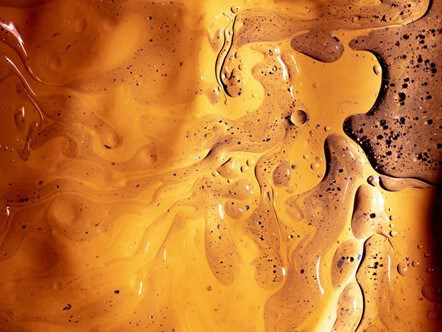
Sunscreens contain a combination of chemical and mineral UV filters to ensure effective protection across the whole UVA and UVB range [5].
Chemical filters are organic molecules able to absorb UVA and/or UVB radiation. Usual examples are octocrylene, avobenzone, and homosalate, among others.
Mineral filters consist of Zinc Oxide and Titanium Dioxide able to scatter and reflect sunlight UV radiation but also absorb it like chemical ones [6].
Which one to choose will depend on your personal preference and skin type or tone. For instance, mineral sunscreens are preferred for sensitive skin but may leave a white cast in darker skin tones. In this case, what’s important is that you choose a sunscreen that you are willing to wear and that adapts to your personal needs.
2.
Sunscreen according to your skin type
When building any
skincare routine
, you need to choose your products (including your sunscreen) based on your skin type.
Here is a little guideline that can help you select the right one for you:
|
|
|
|
|
Oily |
Products formulated to avoid a “greasy” after-feel. Look for products that are lightweight, “oil-free” or even with a mattifying effect to control shine.
|
• Isntree Hyaluronic Acid Watery Sun Gel SPF 50+ PA++++ |
|
Dry |
Cream or lotion format that nourishes your skin with moisturizers (glycerin, aloe vera, panthenol), and emollients (ceramides, squalane). |
• La Roche-Posay Toleriane Double Repair Moisturizer SPF 30 |
|
Sensitive |
Products with mineral filters and fragrance-free and alcohol-free are ideal to avoid potential sensitizers. Look for creams or lotions for sensitive skin with emollients (ceramides), humectants (glycerin, panthenol), and even calming extracts ( cica) aloe vera, oat). |
• Vanicream Facial Moisturizer SPF 30 Mineral Sunscreen |
|
Normal |
You can choose any type of format, from lotions and creams to gel-based products. Look for “lightweight” products if you want to avoid a greasy after-feel. |
• Beauty of Joseon Relief Sun: Rice + Probiotics SPF 50 Pa++++ |
Some sunscreens are carefully formulated to suit every skin type. One product that is widely recommended by dermatologists and users as universally enjoyable is Beauty of Joseon Relief Sun: Rice + Probiotics SPF 50 Pa++++ since it’s lightweight and absorbs quickly (good for oily skin) but also layers well on top of moisturizers (good for dry skin) and is fragrance-free (good for sensitive skin).
3.
Sunscreen according to your skin tone

Some sunscreens can leave an unflattering white cast on the skin, limiting some people from wearing sun protection. This is mostly seen for those products formulated with mineral filters (especially Zinc Oxide), but it greatly depends on the formula.
Modern formulation technologies have brought numerous options so you can avoid thick white casts and enjoy wearing sunscreen every day, even for darker skin tones. A few options to consider:
OPTIONS |
DESCRIPTION |
EXAMPLES |
Chemical sunscreens |
They’re the simplest option to avoid white cast.
|
• Naturium Dew-Glow Moisturizer SPF 50 PA++++
• Beauty of Joseon Relief Sun: Rice + Probiotics SPF 50 Pa++++ |
Invisible sunscreens |
Some chemical sunscreens are already clear (like gels), thus suitable for ALL skin tones. | • Supergoop! Unseen Sunscreen Broad Spectrum Sunscreen SPF 40 PA+++ |
Mineral sunscreens for dark skin |
Dark skin and sensitive to chemical sunscreens? Some mineral sunscreens are formulated for dark skin. | • Black Girl Sunscreen SPF 30 |
Tinted sunscreens |
These are great alternatives for uneven skin tones (with dark spots and discoloration) or for “no-makeup-makeup” natural looks. | • Laura Mercier Tinted Moisturizer Natural Skin Perfector Broad Spectrum SPF 30 (all shades) |
Foundations with SPF |
For makeup wearers, incorporating sun protection in your foundation is a good option. | • L’Oréal Radiant Serum Foundation with SPF 50 (all shades) |
4.
Sunscreen with an extra effect

Some multifunctional sunscreens can simplify your morning routine as an all-in-one alternative. These are infused with active ingredients to treat skin concerns while protecting and even adding color to your skin.
EXTRA EFFECT |
DESCRIPTION |
EXAMPLES |
| Antiaging | Infused with antiaging ingredients such as antioxidants, vitamins , ceramides, peptides, hyaluronic acid, or bio-retinol ( bakuchiol ). |
• Kosas DreamBeam Silicone-Free Mineral Sunscreen SPF 40 with Ceramides and Peptides
• Supergoop! Daily Dose Bioretinol + Mineral SPF 40 with Bakuchiol • ISDIN Eryfotona Ageless |
| Skin brightening | Packed with skin-lightening agents to even skin tone and improve dark spots and discolorations. |
• Glow Recipe Watermelon Glow Niacinamide Sunscreen SPF 50
• Supergoop! Daily Dose Vitamin C Serum with SPF 40 |
Sunscreen in your Skincare Routine – How and When to Apply and Reapply?
Skincare
routines should be tailored according to your skin’s needs. However, sequential steps must be followed to ensure that each product works its best.
Sunscreens (SPF 30 or higher) must be the last step in your morning routine
after moisturizing and before applying any makeup, waiting 3-5 minutes between each step to allow each product to absorb.
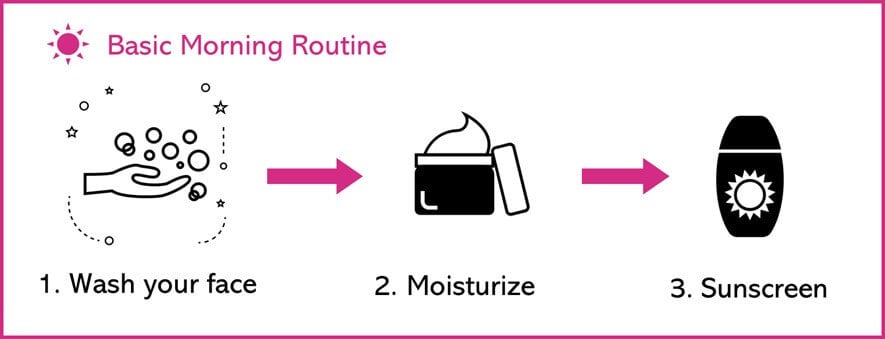
Now, here is when personalization takes place. You can choose:
· A moisturizer with SPF (2-in-1 application), simplifying this step.
· A tinted moisturizer with SPF (3-in-1 application), simplifying the morning routine even more.
· A foundation with SPF, applying
generously
after your moisturizer.
· What about serums? Apply before the moisturizer. It’s advised to use antioxidant serums (
Vitamin C
ideally [7]) to increase the photoprotective efficacy of sunscreens.
Application:
apply ¼ teaspoon of sunscreen on your face, ears, and front of the neck, at least 15 minutes before going outside.
Reapplication
: If you plan to be directly exposed to the sun, every 2 hours is recommended. If you plan to be indoors, this time frame can extend a bit.
Do you have makeup on?
An easy way to reapply is to use SPF-rated powders for a quick retouch, such as Supergoop (Re)setting 100% Mineral Powders SPF 35.
THE TAKEAWAY
Choosing the right sunscreen(s) is essential to ensure daily protection from UV rays. Always consider your skin type and choose products that suit your needs and daily routine to make sure you will wear them every single day.
REFERENCES
[1] Serpone, N. (2021). Sunscreens and their usefulness: have we made any progress in the last two decades? Photochemical and Photobiological Sciences, 20 (2), 189–244. https://doi.org/10.1007/s43630-021-00013-1
[2] Patel, N., Highton, A., & Moy, R. L. (1992). Properties of Topical Sunscreen Formulations: A Review. The Journal of Dermatologic Surgery and Oncology, 18 (4), 316–320. https://doi.org/10.1111/j.1524-4725.1992.tb03677.x
[3] Wilson, B. D. (2012, September 1). Comprehensive Review of Ultraviolet Radiation and the Current Status on Sunscreens. PubMed Central (PMC). https://www.ncbi.nlm.nih.gov/pmc/articles/PMC3460660/
[4] Barron, B. (2023, February 15). What Does the PA+ Sunscreen Symbol Mean? Paula’s Choice Skincare. https://www.paulaschoice.com/expert-advice/skincare-advice/sunscreen/what-does-pa-sunscreen-symbol-mean.html
[5] Stiefel, C., & Schwack, W. (2015). Photoprotection in changing times – UV filter efficacy and safety, sensitization processes and regulatory aspects. International Journal of Cosmetic Science, 37 (1), 2–30. https://doi.org/10.1111/ics.12165
[6] Schneider, S. L., & Lim, H. W. (2019). A review of inorganic UV filters zinc oxide and titanium dioxide. Photodermatology, Photoimmunology and Photomedicine, 35 (6), 442–446. https://doi.org/10.1111/phpp.12439
[7] Telang, P. S. (2013). Vitamin C in dermatology. Indian Dermatology Online Journal, 4 (2), 143. https://doi.org/10.4103/2229-5178.110593

 By myulikeadmin
By myulikeadmin
